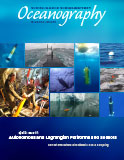Article Abstract
An estimated 70,000 US servicemen remain missing from World War II, with approximately two-thirds of those losses from the Pacific Theater. Many of the missing were lost in the maritime environment. Historically, attempts to locate remains in this environment were deemed too difficult, as water-based searches can be labor intensive, logistically cumbersome, and technically difficult to execute. Ironically, despite these challenges, underwater sites are often better preserved than terrestrial sites, as they are less subject to human disturbance and negative environmental conditions. Technological advances in unmanned platforms, autonomy, sensors, underwater navigation and communications, forensic oceanography, search methodologies, and data processing are now enabling the discovery of crash sites associated with losses and stimulating new research that combines oceanography, unmanned systems, historical research, and forensic archaeological methods. Project Recover began as a two-year program funded by the US Office of Naval Research, designed to serve as a testbed for unmanned technologies and public outreach. Now, through public and private sponsorship, it has grown into providing a global survey capability.

